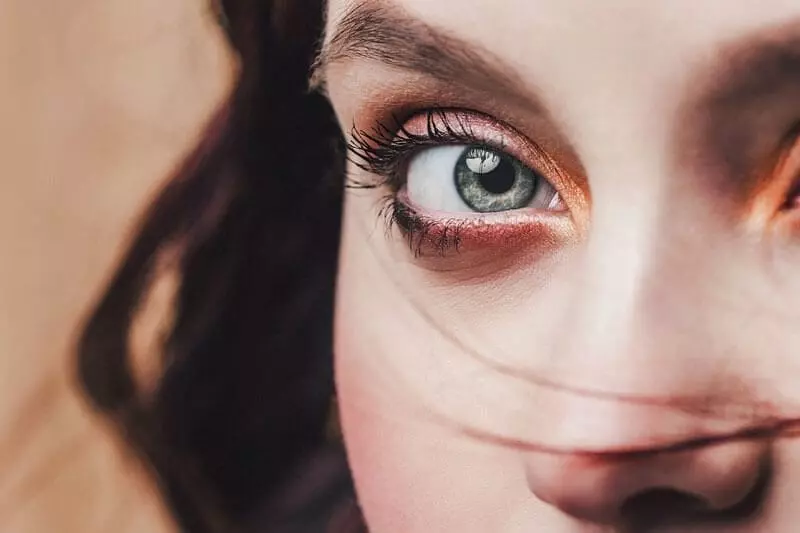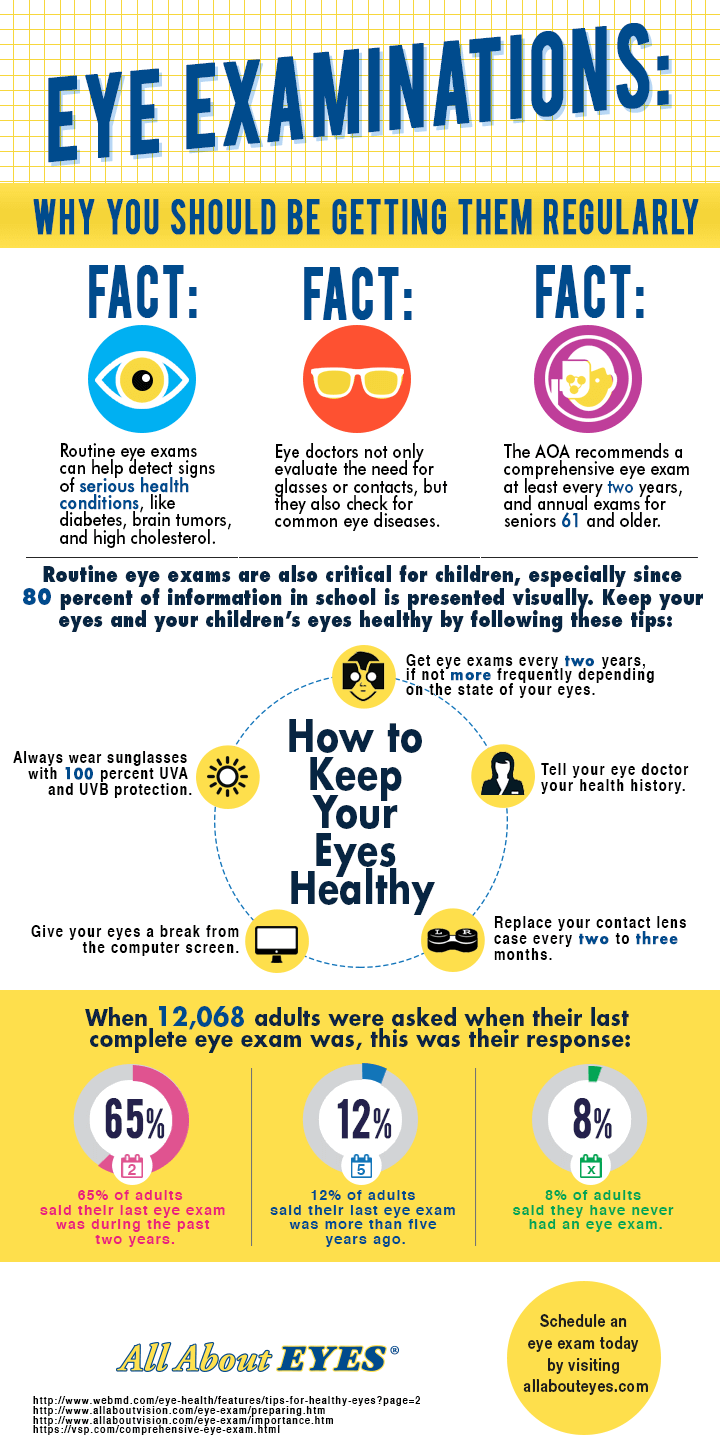
Have you ever looked in the mirror and noticed that your eye color looks different? Did your eyes appear a darker brown yesterday but today they look lighter? Eye color in and of itself is a fascinating phenomenon. But when your eyes appear to change color suddenly, or even over time, the wonder that is eye color becomes significantly more intriguing.
Where does eye color come from, and how can it change? Does this change happen naturally or do outside factors influence how your eye color appears? Below, we’ll answer these questions and others as we explain why and how eye color changes.
How Does Eye Color Develop?
When you were born, you likely had blue eyes. Babies’ eyes display this color because their bodies and eyes contain low levels of melanin. Melanin is a pigment that gives your eyes, skin, and hair their color. Once your body became exposed to light, it started to produce melanin, which in turn changed the color of your hair, skin, and eyes.
Since babies don’t receive a lot of light exposure, they tend to have fairer skin, hair, and eyes than adults. However, genetics also factor into skin, eye, and hair color. For example, if your parents have darker skin and hair, then you likely had those same dark pigments in your skin and hair when you were born.
Your eye color, however, probably took a little more time to develop. The longer your eyes were exposed to light, the more melanin pigments your irises produced. But depending on your genetics, your eyes could have turned dark brown. Or maybe your eyes didn’t darken much and they stayed light blue. So regardless of how much or little light exposure you have, your genes determine how light or dark your eye color is.
When Can Eyes Change Color?
Typically, a person’s eye color becomes permanent about three years after birth. Once eye color has set, the color usually won’t change. However, several factors can influence your eye color and whether or not it changes to a different pigment.
Increased Sun Exposure
As previously mentioned, exposure to light causes your body to produce more melanin. Even if your eye color has set, your eye color could slightly change if you expose your eyes to more sunlight. As a result, your eyes might appear a darker shade of brown, blue, green, or gray, depending on your current eye color.
Sunlight can also reveal colors that were already in your eyes. Since natural sunlight is often brighter than artificial lights, exposure to it might allow you to see colors in your irises that you couldn’t recognize before.
Changes in Pupil Size
Your pupils’ size can also cause your eyes to change color. When your pupils shrink or dilate, the color of your eyes may seem to change. For example, if your pupils widen, not as much of your irises are exposed, and the remaining irises look darker.
On the other hand, when your pupils are smaller, your eye color may appear lighter. This change is due to the contrast between the black of the pupil and the surrounding iris.
Clothing You Wear
If you think back to your elementary, middle school, high school, or even college art classes, you’ll remember that complementary colors enhance one another. When reds and greens are placed together, the reds appear more vibrant while the greens appear more lush.
This principle applies to eye color as well. If you wear certain colors of clothing, the pigments in your shirt, jacket, tie, or scarf could temporarily change the color of your eyes. Depending on the color you wear, your eyes may appear lighter or darker.
Development of Heterochromia
If you’ve developed a rare condition called heterochromia, your eyes likely have changed color significantly. Heterochromia refers to a condition where each iris has a different color. However, a few kinds of this condition exist.
Partial heterochromia means parts of your irises are different colors. One corner might look green while the rest of the iris looks blue. Central heterochromia refers to a condition where your iris has two different colored rings.
You might be born with this condition, and if you are, it doesn’t affect your health. However, you can acquire heterochromia as an adult from:
- Eye surgery
- Eye bleeding
- Eye swelling
- Eye injury
- Developing of glaucoma
- Developing of tumors in the iris
Some of these causes can have adverse effects on your ocular and overall health. If you’ve noticed a drastic change in your eye color as an adult, you may need to see an ophthalmologist or optometrist to rule out any possible health risks.
What Do the Experts Say About Changing Eye Color?
According to some eye doctors, your eyes don’t just change color on their own. Instead, a variety of external factors combined with your genetics determines how your eye color looks on any given day. Unless you’ve noticed drastic, sudden changes in your eye color, you have no need to worry.
However, if your eye color has changed suddenly and you noticed a big difference in the color, meet with your eye doctor immediately. This rapid change could be a sign of a more serious issue that your eye doctor can diagnose and treat.

When you take a look at your surroundings, you find it difficult to appreciate the beauty around you when your eyes feel itchy or gritty. Or, when you work, you need to focus on the task at hand. Yet focusing seems impossible if your eyes burn.
These symptoms may indicate that you suffer from a condition commonly known as dry eye. Below, we’ll discuss this condition so you can understand what it is and how it impacts your vision. Read on to learn how dry eye affects you and what you can do about it.
What Is Dry Eye?
Dry eye refers to a condition where a person doesn’t produce enough tears to lubricate his or her eyes. Your tears allow your eyes to stay healthy and, believe it or not, they also allow you to have clearer vision.
When you blink your eyes, small amounts of tears spread from your tear ducts across your eyes’ front surface. As the moisture travels around your eyes, it lubricates your eyes, washes away foreign objects (like dust), reduces your risk for eye infections, and keeps your eyes smooth.
If you suffer from dry eye, your eyes may feel gritty, irritated, or scratchy. You may also feel like your eyes burn or like something is stuck in your eyes. Other symptoms of dry eye include blurred vision and excess watering of the eyes. If your dry eye is severe, it could damage your eyes and cause more serious vision problems.
What Causes Dry Eye?
Several causes contribute to dry eye. However, the two most common causes include the insufficient production of tears to keep eyes moist or the production of poor quality tears.
Insufficient Tears
Your eyes contain several glands to produce tears. Various factors could cause you to produce an insufficient amount of tears.
As you age, your eyes will become drier as a natural part of getting older. Additionally, women are more likely to develop dry eye as they experience hormone changes from using oral contraceptives, becoming pregnant, or going through menopause.
Medications like decongestants, antihistamines, antidepressants, and blood pressure medications can all lower your eyes’ regular tear production. If you suffer from conditions like diabetes, hypothyroidism, or rheumatoid arthritis, you are also at higher risk for developing dry eye.
However, the most common factor for insufficient tear production is the environment you’re in. For example, if you live in a dry, windy climate, these conditions increase how quickly your tears evaporate. Additionally, if you stare at electronic screens for too long, you don’t blink as often. This infrequent blinking also lets your tears evaporate more quickly. As a result, you’ll develop dry eye.
Poor Quality Tears
To effectively lubricate your eyes, your tears have three different layers. The outer layer is made up of oil that prevents the middle water layer from evaporating too quickly. The inner layer is made up of mucus that spreads the watery layer evenly across your eyes.
Sometimes, deficiencies in these layers causes you to produce poor quality tears. For example, if the oily layer isn’t thick enough, the watery layer could evaporate too quickly and your eyes won’t become moist. If the watery layer doesn’t contain enough water, your eyes won’t receive enough lubricant. And if the mucus layer is too thin, it can’t effectively spread your tears across your eyes.
How Is Dry Eye Treated?
Before your eye doctor can treat you for dry eyes, he or she must perform a comprehensive eye exam. During this exam, your optometrist or ophthalmologist will evaluate the quality of your tears as well as how many you produce.
Once you’ve been diagnosed with dry eye, your eye doctor will treat the condition with artificial tears. He or she may also have you take a medication that increases your natural tear production. Other forms of treatment include changing your current medications, adjusting any environmental factors you can control (like staring at a computer screen), and treating medical conditions that cause dry eye.
Can Dry Eye Be Prevented?
Like many other conditions, dry eye can be prevented. To avoid developing dry eye, wear sunglasses when you go outside. Sunglasses protect your eyes from the sun and wind so your tears don’t evaporate as quickly. Additionally, you should keep your home and office relatively humid and blink regularly if you stare at electronic screens. For more tips, talk with your eye doctor.
Take note of the symptoms of dry eye listed above. If you experience any of these symptoms, visit your eye doctor to see what lifestyle changes or medications can treat your dry eye. Also, use the preventative tips we’ve mentioned to reduce your risk for developing dry eye in the future.
If you have any questions about dry eye or want to know more about this condition, speak with your optometrist or ophthalmologist as soon as possible.
Did you know that eye examinations are useful for more than checking to see if you prescription changed since your last visit to the optometrist? Check out our infographic below to learn more about why you should make sure to get your eyes examined at least every two years, if not more often.

Need an eye exam for you or your family? Contact your closes All About Eyes and we will be more than happy to help you.

Whether you only need glasses to help you read or you wear corrective lenses regularly so you can see properly, you know that certain conditions cause vision issues. But poor eyesight doesn’t just happen—it’s caused by several kinds of eye conditions.
Below, we’ll discuss these eye issues so you know exactly what they are and why they cause poor vision. We’ll also provide you with a list of symptoms of each condition so you know if you are at risk for developing the issue.
1. Myopia
More commonly known as nearsightedness, the term “myopia” refers to a condition where a person can see objects clearly up close, but faraway objects appear blurry. This condition occurs when your eyeball is too long for your cornea and lens. Your cornea and lens may also be too curved for your eyeball’s length.
These deformities in your eye cause light rays to focus directly in front of your retina rather than directly on its surface.
Myopia is fairly common, affecting about 30% of the population.
It can also be inherited. However, most often, the condition usually develops depending on how an individual uses his or her eyes. In fact, people who spend large amounts of time doing the following are more at risk for developing nearsightedness:
- Working at a computer
- Working on detailed tasks
- Reading
Essentially, any task that requires you to look up close and focus for long periods of time could cause you to develop myopia.
If you suffer from nearsightedness, you’ll notice symptoms like blurry vision at a distance, headaches, and eye strain.
2. Hyperopia
Also called farsightedness, hyperopia is the opposite of myopia. Individuals who suffer from hyperopia can clearly see objects, but close-up objects appear blurry or fuzzy. Farsightedness also occurs because of curvature issues in the eye’s retina, cornea, and lens. Additionally, the eyeball’s length may be too short relative to the lens and cornea.
For farsightedness to occur, the cornea and lens curve in such a way that light rays focus behind your retina instead of on it. As a result, objects close to you appear blurry while distant objects seem crystal clear.
This condition is also common in adults, though some children are born farsighted. While some children outgrow this vision issue, others don’t.
If you are farsighted, you’ll experience symptoms such as headaches, blurry vision, and eye strain.
3. Presbyopia
Presbyopia is a form of farsightedness that occurs naturally as you age. You may notice symptoms once you turn 40. Symptoms of this condition are the same as for hyperopia, but you will also have a harder time focusing on close-up objects.
This inability to focus results from the hardening of the lens inside your eye rather than from issues with the retina. Most often, reading glasses can treat the condition.
4. Astigmatism
Astigmatism is another refractive error that people can suffer from. Usually, this condition results from irregularly shaped corneas. If you have astigmatism, light rays won’t come to a single focus point on your retina. So no matter how close or far away an item is, you can’t see it clearly. Aside from blurred vision, you may also experience headaches and dry or burning eyes.
5. Glaucoma
According to the American Optometric Association, this condition is the second leading cause of blindness in the US.
Glaucoma is a condition where the fluid in your eye can’t drain normally. This fluid builds up, increasing the pressure in your eye. The fluid can build up to such high levels that it can pinch or damage the optic nerve. As a result, you can’t see as clearly, and you could go blind without the proper treatment.
Two kinds of glaucoma exist: angle-closure and open-angle. With angle-closure glaucoma, the drainage canals in your eye are completely blocked. The pressure in your eye will rise suddenly. This is a rarer form of glaucoma and must be treated immediately.
Open-angle glaucoma is more common, but it can be just as dangerous as other forms. If you suffer from open-angle glaucoma, your optic nerve becomes damaged slowly and painlessly. This slow development puts you at risk for losing large portions of your vision.
Symptoms of glaucoma include blurry or hazy vision, eye pain, headaches, nausea, vomiting, and sight loss.
How Your Eye Doctor Can Help
If you show any of the symptoms listed for the conditions mentioned above, contact your optometrist as soon as possible. Your eye doctor will examine your eyes at your next appointment and check for any of these conditions. If necessary, he or she will prescribe you with corrective lenses to improve your vision.
For more information, or if you have other questions about how these conditions affect your vision, don’t hesitate to ask your eye doctor. He or she can provide you with the information you need, as well as prevention tips so you can preserve your eyesight for as long as possible.

Whether you recently discovered that you’re pregnant or you’re nearing the end of your pregnancy, you know that your body will undergo or has undergone dozens of changes. Some changes you might expect, like an expanding belly to accommodate your growing baby.
However, you might be less familiar with other changes. For example, did you know that pregnancy can affect your vision and eye health? While most of the changes to your eyes aren’t serious, many of them can cause you to feel uncomfortable.
In our blog, we’ll explain exactly how pregnancy affects your vision and overall eye health so you can fully prepare yourself for the months ahead.
Vision Changes You’ll Experience
Many women experience changes to their vision when they become pregnant. Below, we’ve listed some of the most common issues that pregnant women face.
Dry Eye
Before you became pregnant, you likely experienced dry eye when you stared at your computer screen too long or as a side effect of medications like antihistamines. Throughout your pregnancy, though, you’ll likely experience this eye condition much more often.
While you’re pregnant, your body’s hormones may affect your eyes’ tear production. Specifically, your eyes might not produce as many tears or as much moisture as they usually do. This reduced lubricant in your eyes makes them feel drier and more uncomfortable.
If you wear contact lenses, your eyes may feel even more irritated and drier than normal. If possible, wear eyeglasses during the remainder of your pregnancy to alleviate your dry eyes. You could also use artificial tears to moisturize your eyes. But check with your eye doctor before you use artificial tears so you know which you can safely use during pregnancy.
Puffy or Swollen Eyelids
Again, because your body’s hormone levels change during pregnancy, your body experiences a few side effects. Another change you’ll experience is water retention. As your body holds onto the water you take in, you may even notice that your eyelids look puffy or swollen.
Though this side effect isn’t anything too serious to worry about, it may just cause you to feel uncomfortable. If you eat a healthy, low-sodium diet and drink plenty of water, you can reduce the amount of water your body retains. Your swollen or puffy eyelids should return to normal.
Blurry Vision
Another side effect of water retention during pregnancy is blurry vision. Not only do your eyelids swell during pregnancy, but your corneas swell up also. Typically, the shape and thickness of your cornea will change as you retain fluids, so your vision may start to blur as a result.
You may want to visit your eye doctor and get a new eyeglass prescription once you notice this change in your vision. However, your vision should return to normal after your give birth or stop breastfeeding. If the change in your vision is slight, you should be fine to use your current eyeglass prescription to see.
But if your vision is severely blurry, consult your eye doctor immediately. He or she will examine your eyes to ensure no other conditions have caused this side effect.
Other Health Issues That Affect Your Eye Health
A few other health conditions that you may develop during pregnancy can also impact your vision and ocular health. These conditions include:
- Preeclampsia. This rare condition occurs in five to eight percent of pregnancy cases. Previously known as toxemia, preeclampsia can put both the mother and baby at risk. Women with this condition often have high blood pressure and high levels of protein in their urine. Preeclampsia can also cause the appearance of flashing lights, auras, blurry vision, and sensitivity to light in pregnant women.
- Gestational diabetes. This is a form of diabetes that women only develop when they become pregnant. High blood sugar levels can damage the small vessels that supply blood to your retinas, and this damage could lead to other serious eye problems. This condition can also cause blurry vision.
If you are at risk for developing preeclampsia or gestational diabetes, work closely with your health care physician and your eye doctor. Together, these professionals can help you maintain good overall and eye health for the remainder of your pregnancy.
Steps to Take to Maintain Good Vision and Eye Health
Though you, like most women, will develop one minor eye condition or another when you become pregnant, you can still take a few steps to maintain good eye health during this time period. Stop any habits that not only affect your vision, but are also bad for your growing baby, such as smoking.
You should also eat a well-rounded, healthy diet to supplement eye health. Make sure to avoid foods that could be harmful for your child, such as raw fish or cold lunchmeats.
Throughout your pregnancy, visit your ophthalmologist or optometrist for regular checkups. If you have other questions about how pregnancy affects your vision, visit an All About Eyes location near you. An eye doctor can address your concerns, provide you with effective and safe treatment, and offer additional tips so you can maintain your vision during and after your pregnancy.
Although you won’t have much cause to worry about your vision during your pregnancy, you should take preventative measures, such as those listed above, to maintain good eye health and ensure the health of your baby.





